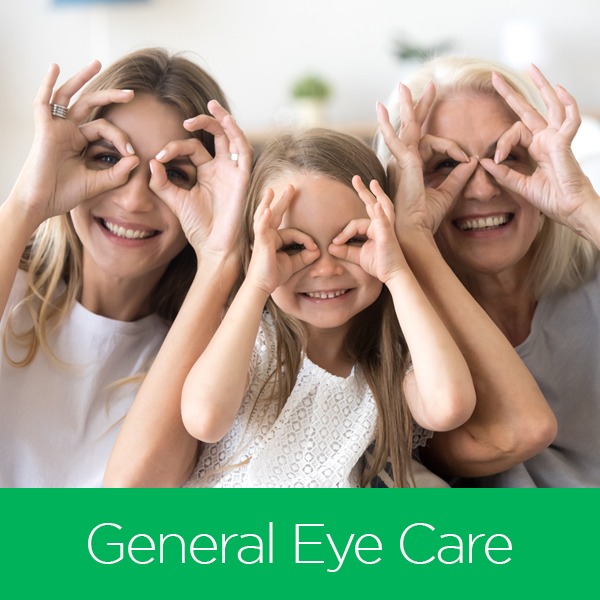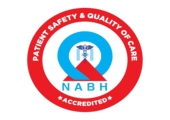Importance of General Eye Care
General eye care is essential for maintaining optimal eye health. Regular eye exams help detect vision problems, eye diseases, and conditions early on. Practising good eye hygiene, wearing protective eyewear, and following a healthy lifestyle contribute to overall eye well-being. Remember to give your eyes regular breaks from screens and seek professional advice for any concerns.

How to Clean Eye:
- First, wash your hands with soap and water.
- Use a cotton ball to clean your eye.
- Pour the eyewash solution into the cotton ball. Alternatively, you can boil the cotton balls in water and use them after they have cooled down.
- Wipe your eye gently from the inside (near your nose) out (toward your ears).
- Don’t use the same cotton ball more than once. Never share your medications with anyone. Keep all medication (eye and others) out of reach of children.
- Don’t let your children play with medicine bottles.
- When you open a bottle, do so by keeping the nozzle a little away from your face and eyes.
- Do not let your children handle glass bottles.
- Put bottles in the fridge, not in the freezer.
- Choose safe toys for your children, which suit their age. Avoid buying darting toys and toys with sharp edges such as bow and arrow, which may hit or injure the eye from a distance.
- Watch your children while at play, and teach them safe activities. Stone-throwing during the play causes severe injuries, which should be avoided.
- Keep daily use items like detergents, disinfectants, and chemicals in a safe place and out of children’s reach.
- Don’t allow your children to play with fireworks, which are dangerous. Have close supervision during festivals like Diwali. Always keep a bucket of water nearby while bursting crackers.
- Keep children away from kitchenware that could harm them. Knives, scissors, etc should be kept in a safe, closed place.
- Teach your children how to protect their eyes by wearing sunglasses whenever they are out. You should also prevent them from looking directly at the sun.
- Don’t allow your children to use laser pens.
Best Vitamins for Eyes or Healthy Food for Eyes
Antioxidants in Health: What are they?
Antioxidants are naturally occurring compounds that can protect the body from harmful free radicals, sweeping them up, before they can cause damage.
Many experts believe free radical damage is one of the most prominent causes of diseases such as heart disease, cancer, and many other diseases.
Eye disease is no exception:
research suggests that certain antioxidants can reduce the risk of cataracts, macular degeneration and others.
Where do I get my antioxidants from?
Vitamins E, C and A are some of the vitamins which act as antioxidants. Tomatoes, broccoli, cauliflower, peppers, red grapes, garlic, spinach, tea, carrot, soy, and whole grains are all excellent choices. The key is to focus on eating those fruits and vegetables that have rich hues of colour. These are high in what is known as phytonutrients.
Vitamin A and EyeSight, How does vitamin A help your eyes?
The photosensitive compound in the retina is a protein called ‘Rhodopsin’ to which vitamin A is present. This complex plays an important role in light perception and thus in Vision. Vitamin A aids in maintaining good night vision and day-to-day vision. The earliest symptom of vitamin A deficiency is night blindness.
Where do I get my vitamin A from?
Carrots have beta-carotene, which our body converts into vitamin A. Beta-carotene comes from green leafy vegetables and intensely coloured fruits and vegetables Take care of your eyes for the ‘eye’ to take care of you.
Amino acids in Eye care: How do amino acids help your eyes?
People with diabetes are at high risk, for the complication of the eyes namely
i) Diabetic retinopathy
ii) Cataract
Where do I get my amino acids from?
Include nuts (peanuts), seeds, pulses, soy products, cereals (wheat, oats, and rice), eggs, and some dairy products (milk, cheese, and yoghurt) – a combination of many of these in your everyday food.
Green leafy vegetables & Eye: How do green leafy vegetables help your eyes?
Green leafy vegetables are rich in vitamins A, C and many are good sources of Iron and Calcium as well. Antioxidants rich in green leafy vegetables are recognized as a key factor in maintaining the health of the macula. Ensure variety in your everyday sources of green leafy vegetables, but don’t overcook them!
Take protein diets of good quality and quantity every day, to help your eyes maintain good health!
How to Use Eye Drops and Ointments:
- Generally, you will find written guidelines for the use of eye drops and ointments on the label of the eye drops bottle or ointment tube.
- Your medication should be used as directed by your physician. Do not attempt self-medication. What is suitable for others may not be good for you. Always get the correct dosage and instructions from the doctor.
- If the medication causes redness or swelling of the eyelids or severe itching, please notify your doctor immediately.
- Take your medications with you whenever you travel.
- Ensure that the eye drop is instilled into the eye
How to Place Drops in the Eye:
- Wash your hands with soap and water.
- Clean your eye(s).
- Shake the bottle vigorously.
- Tilt the head back and look upward.
- Gently pull the lower lid away from the eye, forming a pocket.
- If a dropper is supplied, hold the dropper tip down to prevent the drops from flowing back into the bulb and becoming contaminated. Never rinse the dropper.
- Replace the cap or dropper on the bottle and tighten it.
- Gently close your eye and lightly press your finger against the inner corner, near the nose for a short period.
- Never use eye drops that have changed colour.
- If you are using more than one kind of drop at the same time, wait at least five minutes before use of other drops.
- Store medication in a cool place or refrigerator if indicated on the label.
How to Apply an Ointment to the Eye:
- Wash your hands with soap and water.
- Clean your eye(s).
- To improve the flow of the ointment, hold the tube in hand for several minutes to warm before use.
- Look forward and gently pull the lower lid away from the eye forming a pocket.
- Place about a cm of ointment into the pouch. Be careful not to touch the eye or eyelid with the tip of the ointment tube.
- Close your eye gently and roll your eye in all directions keeping the eye closed. Temporary blurring may occur.
- If you are using more than one kind of ointment at the same time, wait about 10 minutes before use of another ointment.
- Store medication in a cool place or refrigerator if so indicated on the label.
Follow directions carefully concerning dose induration of use.






